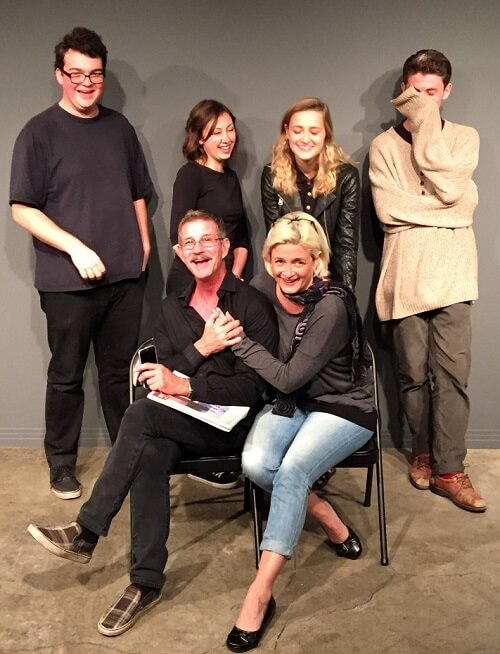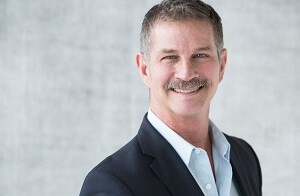Getting to Know the La Piana Team: An Interview with Doug Green
This blog post is part of our series getting to know the La Piana team. This week we spoke with Doug Green, Senior Consultant. Doug joined the firm in January 2016 and is based in Santa Paula, California.
When and why did you decide to dedicate your career to the nonprofit sector?
I was basically born into the mutual savings and loan business (mutual associations are ‘owned’ by the depositors); my dad was an S&L executive that always brought to mind the George Bailey character played by Jimmy Stewart in It’s a Wonderful Life. I didn’t know what I wanted to do when I grew up, but I loved the public benefit mission of nonprofit financial institutions. So I worked in that field for the first 10-12 years of my career. Then, in my early 30s, for the first time, I found myself working for a privately held savings bank, running their loan servicing department.
One day, the mission statement for the bank came across my desk, and it read “to enhance the wealth of its shareholders.” I had a crushing epiphany. I saw my tombstone in front of me, with the words: “Here lies Doug Green. Enhanced shareholder wealth.” I resigned that day! I’ve worked in the nonprofit sector ever since. The lesson from the bank was that structure matters, the ownership of the company matters, and I want to work for organizations that are owned by the public and benefit the public.
A few years later, a couple of friends told me they were looking for a director at an AIDS services organization in Ventura. I had never so much as managed a volunteer, written a grant, or asked anyone for money (other than my parents!), but ignorance is bliss, so I interviewed…and was hired. And at the time it was the most significant thing I’d ever done in my life. I found that the work gave my life meaning at a profound level. It was like that moment in The Wizard of Oz when you go from black-and-white to Technicolor: this is what living with a sense of purpose looks like! It’s a completely different world.
How have your previous positions, both in and out of the nonprofit sector, shaped your work today?
When I work with the staff of nonprofits today, I have tremendous empathy for what they do on a daily basis. In my job with the AIDS organization, I made a lot of fundraising asks that were met with rejection. And I went to a lot of funerals. So I cut my teeth on one of the most challenging jobs, but I honestly think that every nonprofit executive’s job is enormously challenging, and I feel real empathy when I’m doing work with them.
Another thing is that I did not know until I got into the sector that having business skills or an MBA is more the exception than the rule. I’ve come to appreciate that having business and financial skills is a really helpful thing in nonprofits. So one of the things I did when I ran a center for nonprofit management was to help mid-career executives acquire some of those skills, through a series of workshops and trainings, to get their “street MBA.” But hearing “nonprofits need to behave more like businesses” is one of my main pet peeves — it’s like fingernails on a chalkboard! Most people who run businesses (large or small) have no idea how difficult it is to run a nonprofit.
It’s not just slightly different, it’s crazy different. Businesses can talk about the triple bottom line, but there’s no real comparison when you think about all the different stakeholder interests that nonprofit leaders have to balance. If you think about the owner of the nonprofit being the public generally, that is a tall order: to mediate the interests of the public. The simplicity of having a bottom line, even when it’s tied to trying to be a good corporate citizen or do good things the world, still pales in comparison to the complexity of trying to make your main focus one of public benefit.
What do you find most rewarding about your work?
I love complex projects that involve diverse teams with a tough problem to solve. The social dynamics, and the juicy organizational challenges and opportunities, really interest and excite me. Because of my financial background, some of my work involves the numbers side of things, which I think is fascinating, but only inasmuch as it helps people solve problems and learn.
I think there’s a lot of people who find conversations about finances and metrics to be annoying, but I feel they’re missing a big part of the conversation. Because the numbers are telling a story that we might not hear otherwise. And behind those numbers are people’s lives and work and passion. Unlocking the story there, and telling that story, is important to having those lives improved.
What is something that most people don’t know about you? 
I had a nonprofit client years ago by the name of Kim Maxwell, one of the founders of the Ojai Players conference and a local leader who was creating a studio in Ojai for emerging storytellers. She was teaching classes, so I decided to take one. It changed my life! I’ve been taking that class every time it’s been offered for the past five years, and I’ve created this body of work. So a few times a year now, I’ll go over and tell a story at Kim’s studio. The group I’m working with there ranges from age 16 to 86, so the range of stories is just amazing, and this community of storytellers brings a lot of joy to my life.
So I’m a nonprofit leader and a consultant, but I’m also a storyteller. I actually just finished a one-man show and am in the production phase of “Doug Disenthralled.” (Photo: Doug (seated, left) with fellow storytellers at Kim Maxwell Studio.)
You’re also a teacher of Nonprofit Studies. What advice do you give new and emerging leaders, or what would you tell Boomers about successfully working with the next generation of nonprofit professionals?
It’s all kind of been said before, but this next generation is incredibly empowered and passionate about change and they think that justice and fair treatment applies to them too, so they’re much less willing to sacrifice themselves on the altar of good intentions the way I think the nonprofit leaders from the Boomer generation have been. But one thing that perhaps hasn’t changed that much is that for those who are excited about a career in the sector, it’s still more like a calling than it is a career opportunity.
One thing about the young people I work with in the graduate programs is that they typically feel very passionate about changing the world and making a difference, so that’s a place where I can really connect with them. The thing I love most is giving them access to the community as laboratory, where they go out and do projects in the community that actually serve the community while giving them experience in the sector. Even if it doesn’t hook them right away, it still creates a transformational change in terms of recognizing what’s possible. I love seeing them have those experiences and how it changes them.
If you could have lunch with anyone, who would it be and why?
Whenever I’m feeling the need for inspiration and a reality check, I like to go out and have a meal or a glass of wine with my mentor, Kate McLean. Kate is the retired CEO of our Community Foundation in Ventura County and still a major force in philanthropy across the state. She’s mentored so many leaders within the community foundation network, and has been a real force for good, taking the principles of good management and leadership and successfully adapting them to work in our sector.
Whenever I’m with her, I can depend upon getting the authentic, unvarnished reality check that I need for whatever I’m working through. At times I can slip into thinking of things in a particular way or not questioning my own assumptions, and I find it incredibly helpful and stimulating to be around someone who can gently but directly challenge my thinking and get me to take it to the next level. I hope that I always have someone like Kate in my life, someone who inspires me but also challenges me.


Comment section